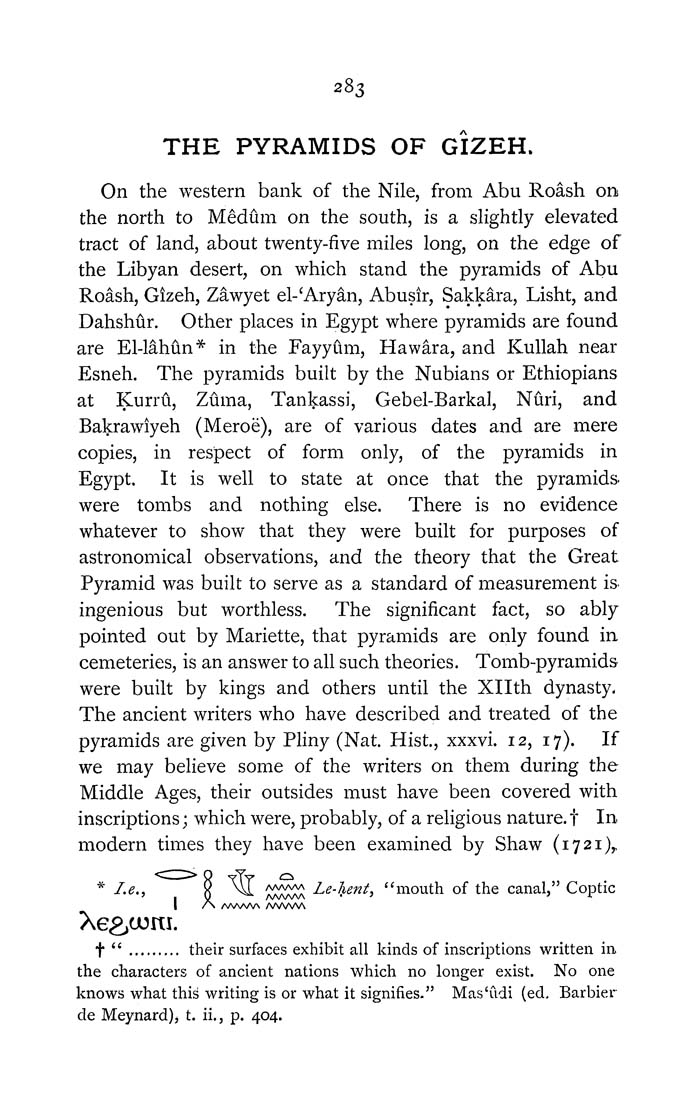2^3
THE PYRAMIDS OF GIZEH.
On the western bank of the Nile, from Abu Roash on
the north to Medum on the south, is a slightly elevated
tract of land, about twenty-five miles long, on the edge of
the Libyan desert, on which stand the pyramids of Abu
Roash, Gizeh, Zawyet el-'Aryan, Abusir, Sakkara, Lisht, and
Dahshur. Other places in Egypt where pyramids are found
are El-lahun"^ in the Fayyum, Hawara, and Kullah near
Esneh. The pyramids built by the Nubians or Ethiopians
at Kurrfi, Zuma, Tankassi, Gebel-Barkal, Nuri, and
Bakrawiyeh (Meroe), are of various dates and are mere
copies, in respect of form only, of the pyramids in
Egypt. It is well to state at once that the pyramids
were tombs and nothing else. There is no evidence
whatever to show that they were built for purposes of
astronomical observations, and the theory that the Great
Pyramid was built to serve as a standard of measurement is
ingenious but worthless. The significant fact, so ably
pointed out by Mariette, that pyramids are only found in
cemeteries, is an answer to all such theories. Tomb-pyramids
were built by kings and others until the Xllth dynasty.
The ancient writers who have described and treated of the
pyramids are given by Phny (Nat. Hist., xxxvi. 12, 17). If
we may believe some of the writers on them during the
Middle Ages, their outsides must have been covered with
inscriptions; which were, probably, of a religious nature.! In
modern times they have been examined by Shaw (1721),,
^ I.e., K ^ ^^CXCC\ ^^-i^^nt, "mouth of the canal," Coptic
I A /\rs/V^AJ\ AAAAAA
t *' ......... their surfaces exhibit all kinds of inscriiDtions written in
the characters of ancient nations which no longer exist. No one
knows what this writing is or what it signifies." Mas'udi (ed. Barbier
de Meynard), t. ii., p. 404.
|








